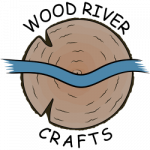Here are some of the different woods we use to make our hand made cutting boards and charcuterie boards
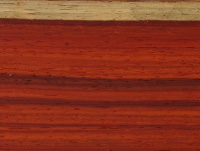
Latin name: Pterocarpus soyauxii
Family: Leguninosae
Distribution: West Africa
Description: Heartwood varies from blood red streaks to bright orange (when freshly cut), sapwood is a pale yellow color (41 lb./ ft3). Straight grained with some interlocking, texture is moderate to coarse.
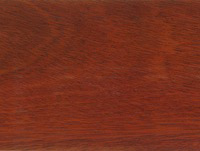
Latin Name: Brosimium paraense
Family: Moracae
Distribution: Range is tropical America
Description: Color is usually deep red with ribbon figure in quarter-sawn Grows to 90 feet height and 24 inches in diameter. Density is 5.5 lbs per bf. Hard
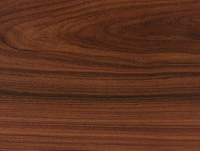
Latin Name: Brosimium paraense
Family: Moracae
Distribution: Range is tropical America
Description: Color is usually deep red with ribbon figure in quarter-sawn Grows to 90 feet height and 24 inches in diameter. Density is 5.5 lbs per bf. Hard
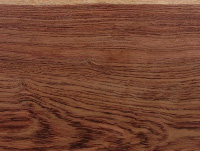
Latin name: Guibourtia spp.
Family: Leguminosae
Other Names: African Rosewood, Kevazingo
Distribution: West and Central Africa
Description: Heartwood is a light red brown attractively veined with pink or red stripes; the sapwood is white in color (50 lb./ ft3)
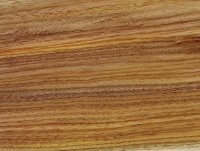
Latin name: Centrolobium spp.
Distribution: South America
Description: Color varies from a orange brown to pale yellow, medium texture and at times irregular grain (48lbs/ft3).

Latin name: Prunus serotina
Family: Rosaceae
Distribution: Eastern N. America
Description: Freshly cut Cherry has a pale orange / pink hue. Since it is a photosensitive wood, as it gets exposed to light it will change into a darker orange / brown color (35 lb./ ft3).
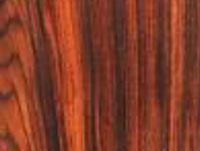
Scientific Name: Dalbergia retusa
Distribution: Central America
Description: Cocobolo is heavy, strong, durable and resistant to preservative treatments. Its uses include architectural woodwork, turnery, tool handles, musical and scientific instruments and specialty items. The wood is also very popular for use as cutlery handles.
Tree Size: 45-60 ft (14-18 m) tall,
1.5-2 ft (50-60 cm) trunk diameter
Average Dried Weight: 69 lbs/ft3 (1,095 kg/m3)
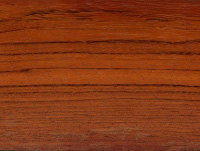
Latin Name: Hymenaea courbaril
Family: Legumiosae
Distribution: Range is Central and South America .
Description: Color is reddish to golden brown. Grows to over 100 ft tall. Density is approx 5 lbs per bf very hard.
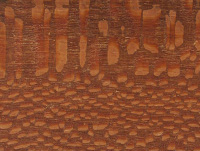
Latin name: Roupala Brasilensis
Family: Proteacea
Distribution: Range is South America
Description: Reddish brown with flecked surface on the quarter sawn. Coarse texture and medium hardness. 5.5 lbs per bf.
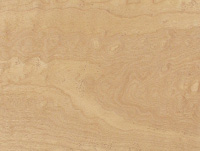 Wood of any of various maple trees; especially the hard close-grained wood of the sugar maple; used especially for furniture and flooring
Wood of any of various maple trees; especially the hard close-grained wood of the sugar maple; used especially for furniture and flooring So named for ambrosia fungi, which is found in association with ambrosia beetles. The beetles bore into the trunk of the tree, bringing with them the ambrosia fungi, which subsequently stains and discolors the surrounding wood. The discoloration can be very similar to spalted maple.
So named for ambrosia fungi, which is found in association with ambrosia beetles. The beetles bore into the trunk of the tree, bringing with them the ambrosia fungi, which subsequently stains and discolors the surrounding wood. The discoloration can be very similar to spalted maple.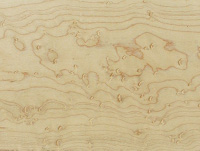 Bird’s eye is a type of figure that occurs within several kinds of wood, most notably in hard maple. It has a distinctive pattern that resembles tiny, swirling eyes disrupting the smooth lines of grain. It is somewhat reminiscent of a burl, but it is quite different: the small knots that make the burl are missing.
Bird’s eye maple is most often found in Acer saccharum (sugar maple)
Bird’s eye is a type of figure that occurs within several kinds of wood, most notably in hard maple. It has a distinctive pattern that resembles tiny, swirling eyes disrupting the smooth lines of grain. It is somewhat reminiscent of a burl, but it is quite different: the small knots that make the burl are missing.
Bird’s eye maple is most often found in Acer saccharum (sugar maple)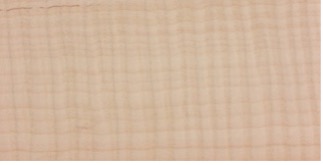 Called curly maple because the ripples in the grain pattern create a three dimensional effect that appears as if the grain has “curled” along the length of the board. It’s also referred to as fiddleback maple, in reference to its historic use for the backs and sides of violins.
Curly maple figuring is similar to quilted maple, but curl is a primarily horizontal pattern perpendicular to the wood grain. Unlike quilted maple, curly maple is most pronounced when the board is quartersawn, and the curls usually become much less pronounced or absent in flatsawn sections of boards.
Called curly maple because the ripples in the grain pattern create a three dimensional effect that appears as if the grain has “curled” along the length of the board. It’s also referred to as fiddleback maple, in reference to its historic use for the backs and sides of violins.
Curly maple figuring is similar to quilted maple, but curl is a primarily horizontal pattern perpendicular to the wood grain. Unlike quilted maple, curly maple is most pronounced when the board is quartersawn, and the curls usually become much less pronounced or absent in flatsawn sections of boards.
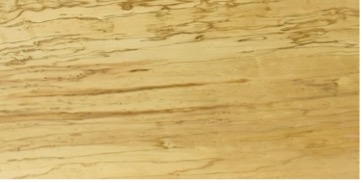 Spalting is simply a fungal discoloration of wood, and can be found on a wide range of wood species and genera. It is found in wood that has begun initial stages of decay, and is then subsequently dried (preventing further decay). The partial decay, called spalting, can give the wood dark contrasting lines and streaks where fungus has begun to attack the wood. If the wood has been rescued from the spalting at the right time, the lumber should still be sound and usable, with little to no soft spots or rotten wood.
Spalting is simply a fungal discoloration of wood, and can be found on a wide range of wood species and genera. It is found in wood that has begun initial stages of decay, and is then subsequently dried (preventing further decay). The partial decay, called spalting, can give the wood dark contrasting lines and streaks where fungus has begun to attack the wood. If the wood has been rescued from the spalting at the right time, the lumber should still be sound and usable, with little to no soft spots or rotten wood.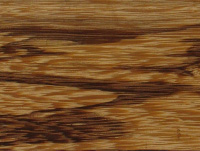
Latin name: marmaroxylon racemosum
Distribution: South America
Description: The Heartwood is an orange / yellow color with black wavy streaking that gives it a marble appearance, grain is interlocked and coarse textured.
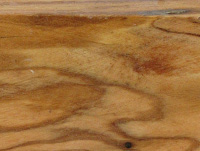
Latin name: Olea Europae
Family: Oleaceae
Distribution: Middle East (Bethlehem)
Description: Light to medium brown with streaks of black and darker brown running through it. Has a fine texture with a shallow interlocked grain giving it a marble appearance (55 lbs/ft3).
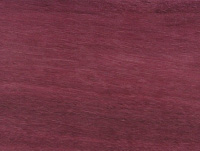
Latin name: Peltogyne spp.
Family: Leguminosae
Distribution: Range extends throughout tropical America.
Grows to 125- 150 ft in height in the wild. Density averages 4 lbs per bf
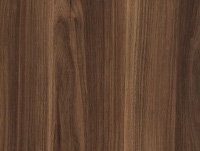
Latin name: Juglans nigra
Family: Juglandaceae
Distribution: Eastern US
Description: The heartwood ranges in color from a light brown to a dark purplish brown, and the sapwood is a light creamy color. It generally has a straight grain with a medium texture. (38 lbs/ft3)
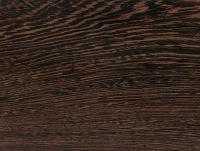
Latin name: Millettia laurentii
Family: Leguminosae Closely related to Panga Panga
Distribution: Mainly Zaire but also Cameroon & Gabon Description: Dark brown heartwood with a distinctly off white sapwood. Coarse texture and straight grained (56 lbs/ft3)
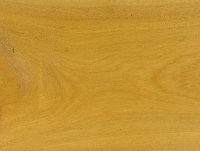
Latin Name: Euxylophora Paraensis
Family: Rutacae
Distribution: Range throughout Central and South America, and North into Caribbean
Description: Color bright yellow, often with fine straight grain. Trees grow to 100 ft height and 30 inches diameter. Density is approximately 4 lbs per bf.
